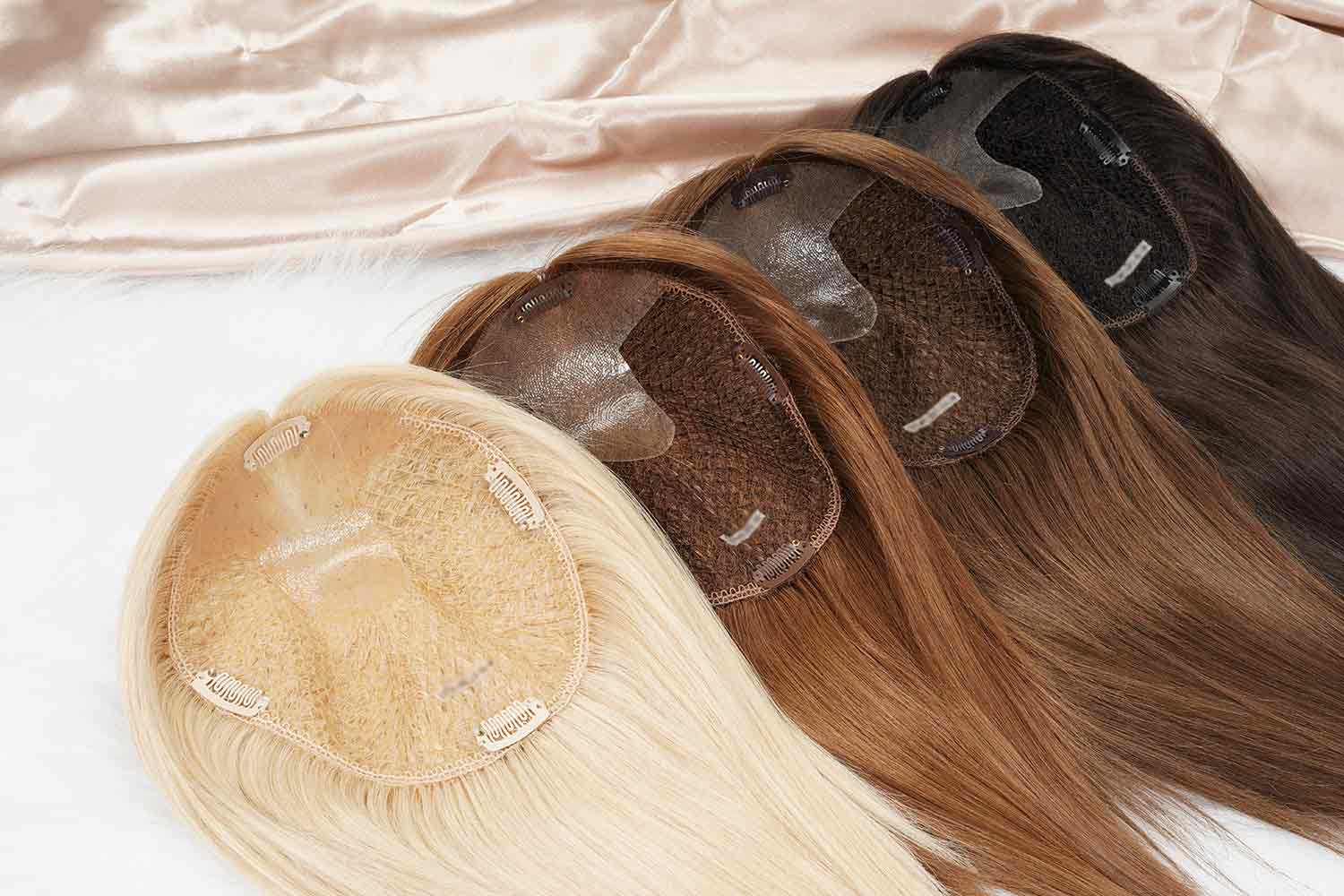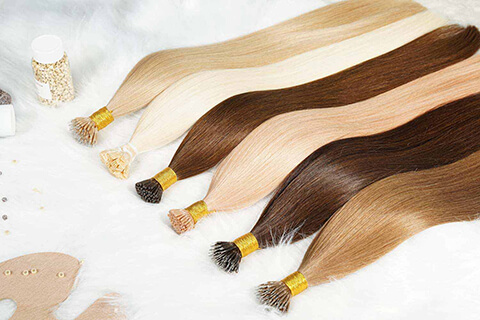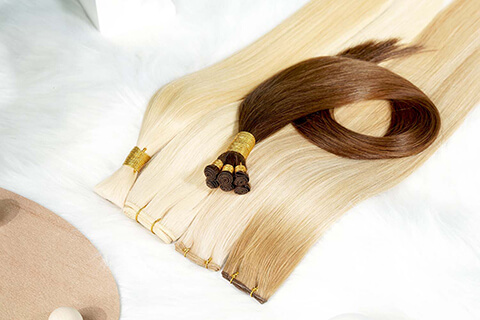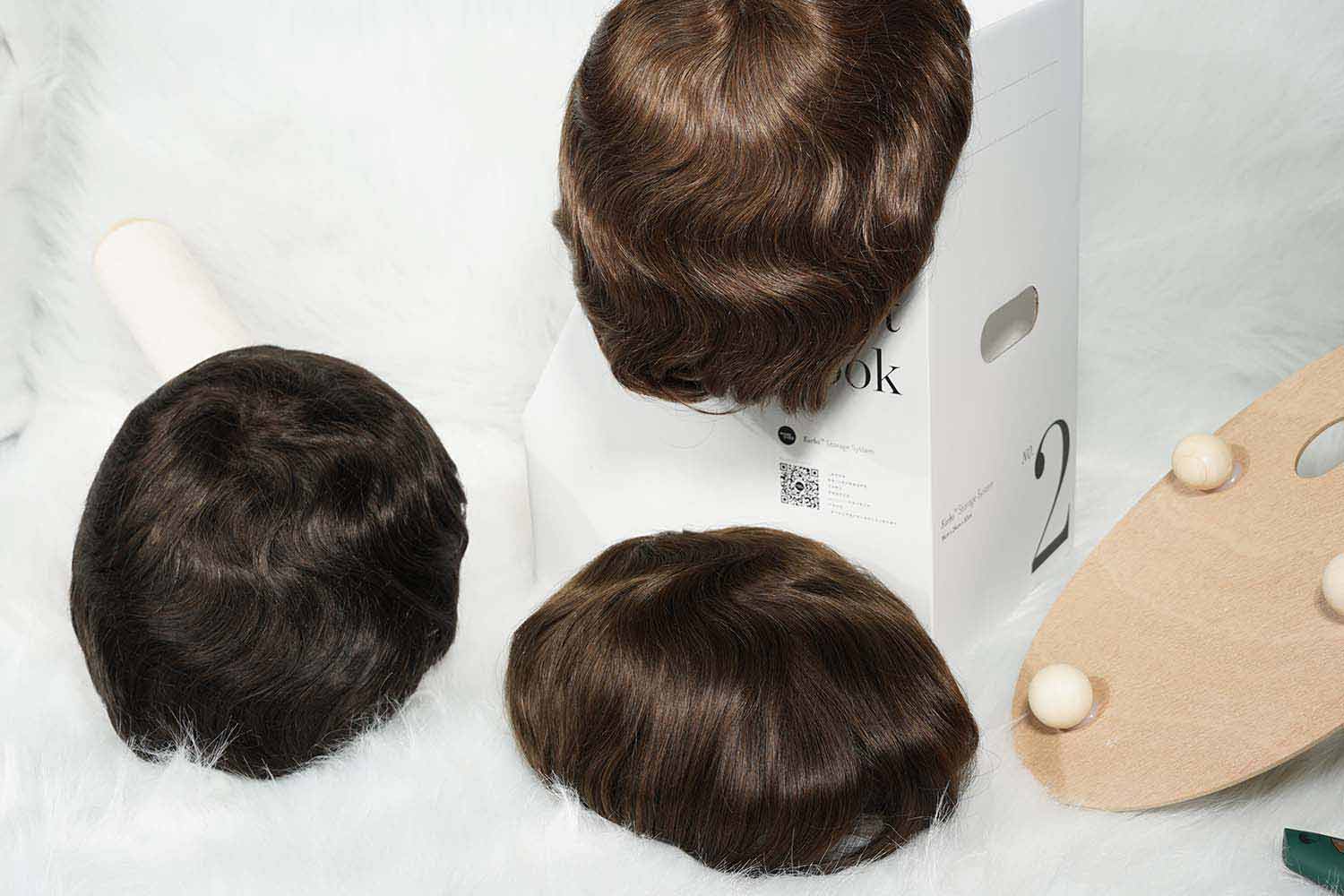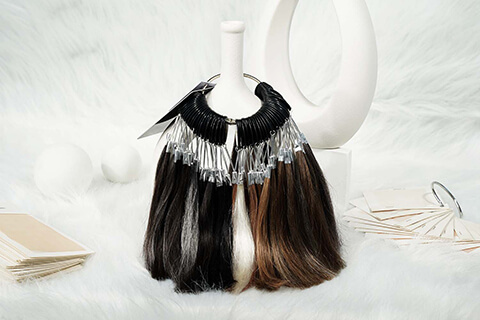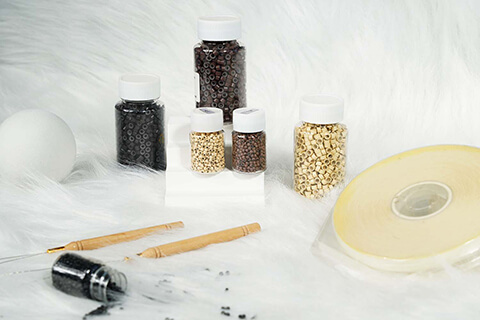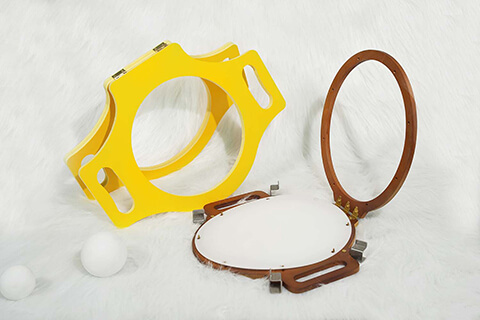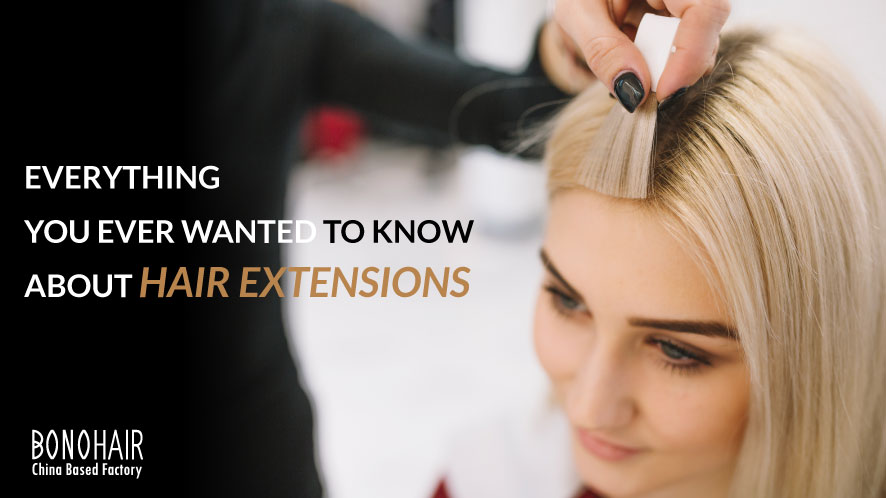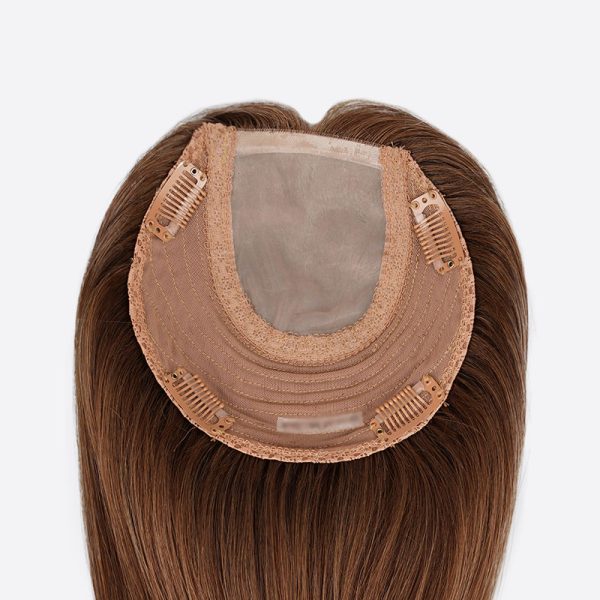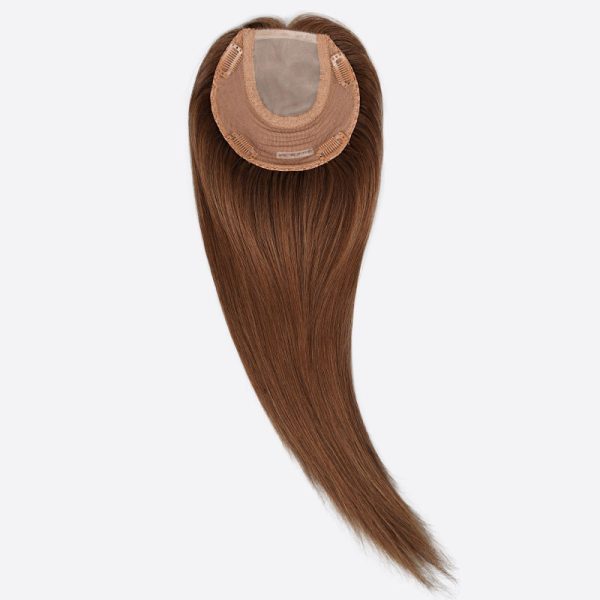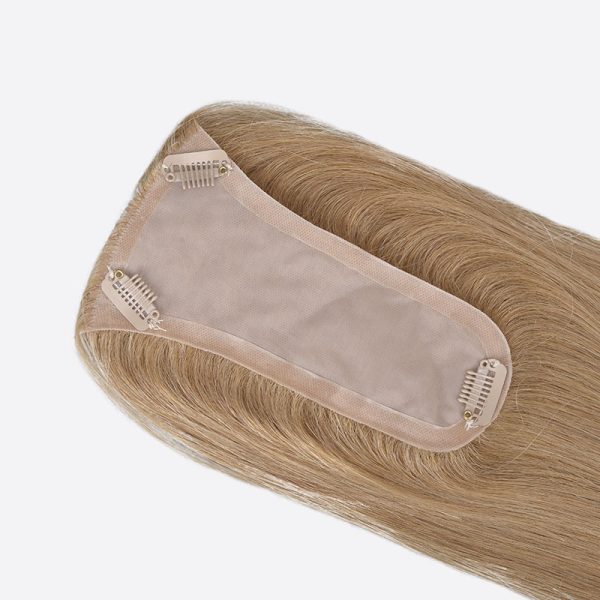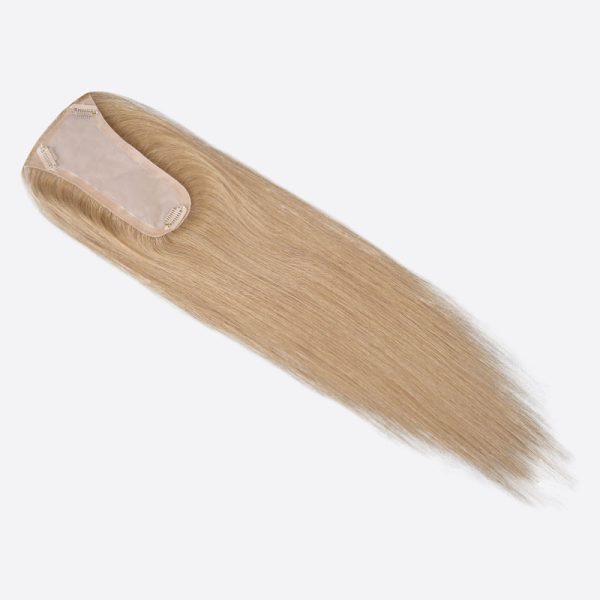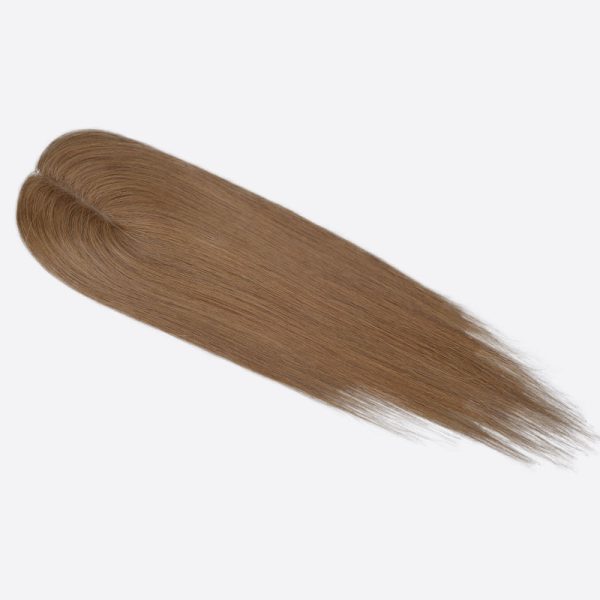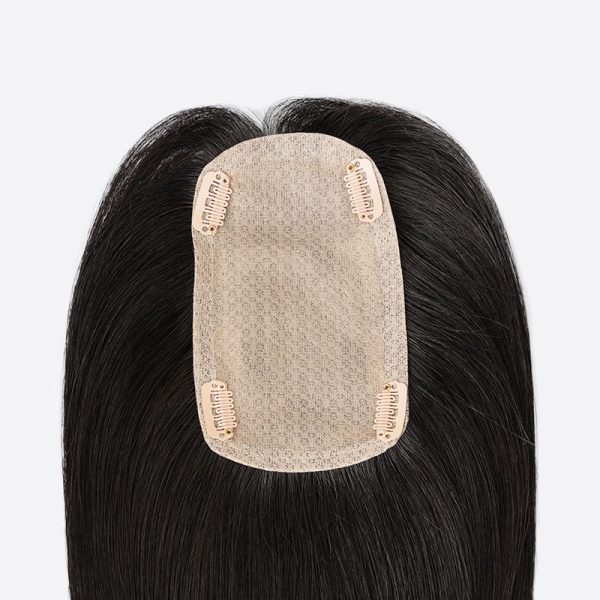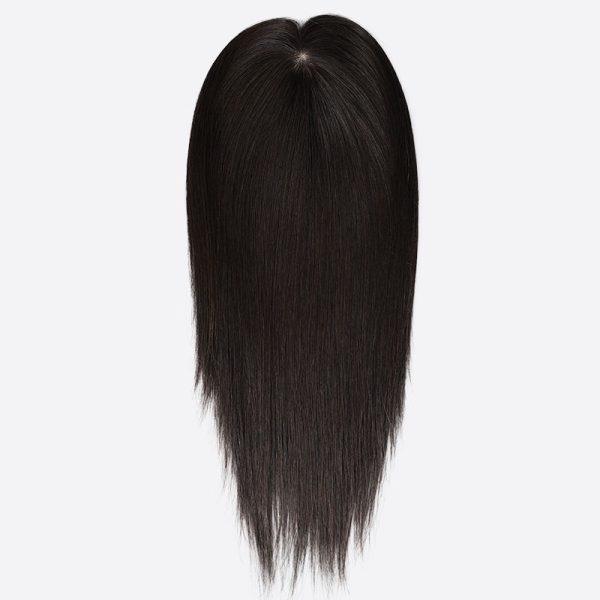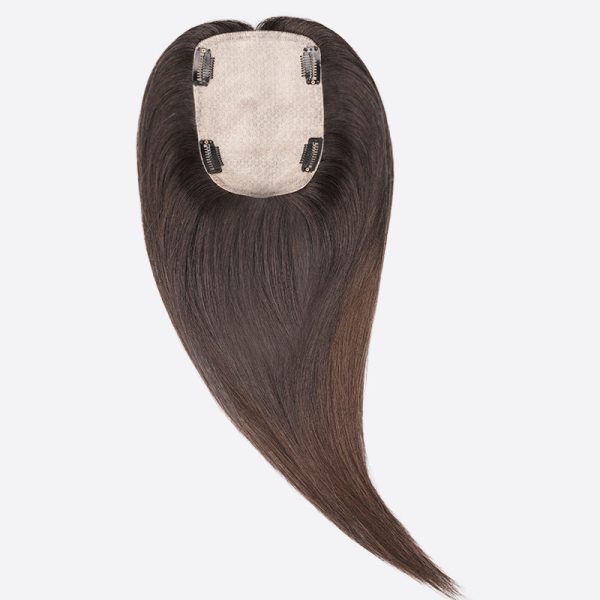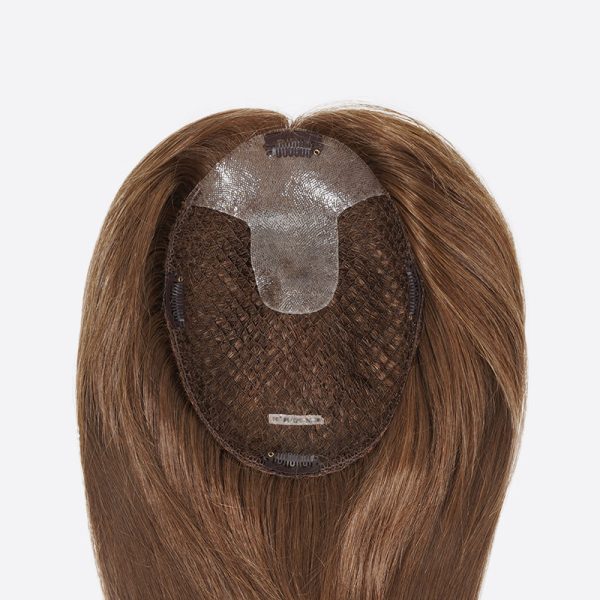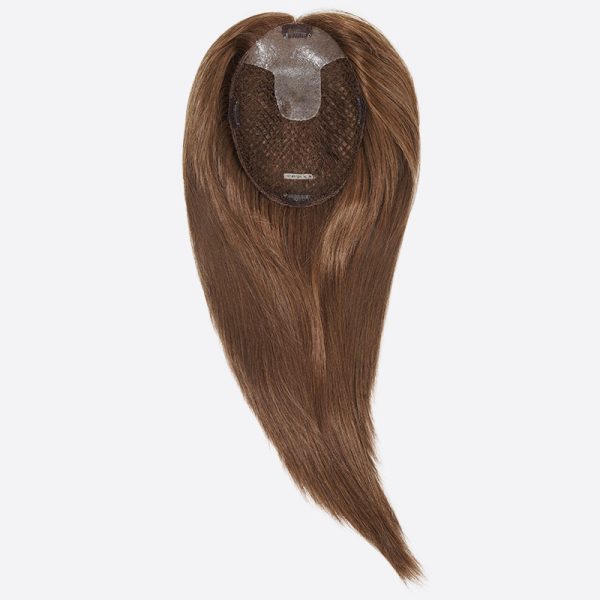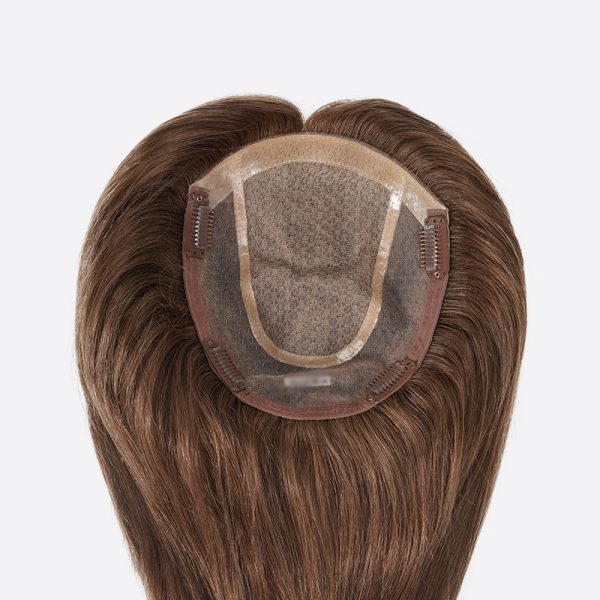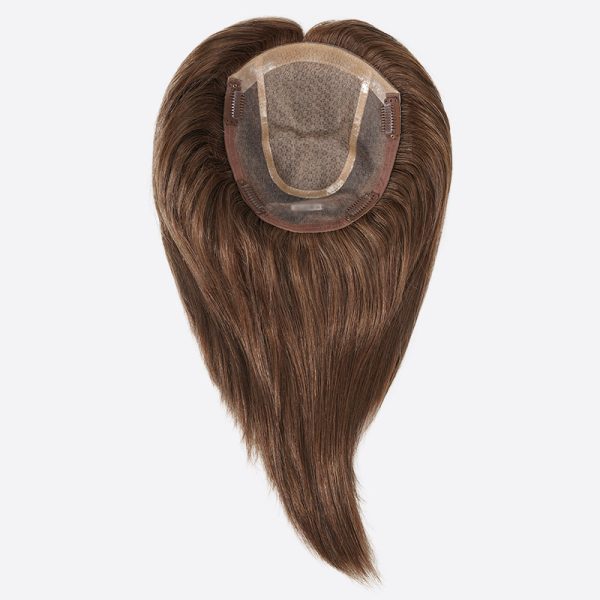A good hairstyle can make or break your day. Often women spend hours selecting a crisp dress, matching accessories, and complimentary shoes or bags, neglecting the most important part of their look- the hairstyle. You may come off as a lazy and incompetent person with poorly managed hair despite spending hours in the dressing room.
Gone are the days when one could get away with a lousy hairstyle due to hair thinning. The advanced hair replacement systems in the beauty industry have raised the bar. You can easily find instant hair thinning solutions to create an impressive hairstyle.
While wigs and toupees provide an efficient solution for losing hair to alopecia or male/female pattern balding, progressive hair loss or hair thinning can be adequately balanced with the help of hair extensions.
Yes! Hair extensions. Why would you cover your entire head with a heavy wig or a toupee when you can easily add extensions to create an illusion of naturally thicker and voluminous hair?
Hair Extensions provide an easy way out to those looking to add extra volume and added length to their natural hair. Extensions do not cover your natural hair; instead, they blend in seamlessly with the wearer’s natural hair. This beautiful amalgamation allows the wearer to create multiple hairstyles.
Selecting the right hair extensions is challenging, not an easy job. Hair extensions have multiple types. The color, texture, material, and types, along with the cost, vary greatly. Hence, it’s a whole new world of hair games.
You sure would not like to enter this magical hair extension like John Snow- knowing nothing. Here is a detailed guide to the hair extensions particularities. Scroll down and find answers to all your queries related to contemporary hairstyling accessories, aka hair extensions.
Detailed Hair Extensions Guide: Preview
- Introduction
- What are the different types of hair extensions?
- Hair extension tools
- Care Instructions for hair extensions
- Hair extension material
- How do hair extensions work?
- How to hide extensions in very short hair?
- How to put in hair extensions?
- How long do hair extensions last?
- How much do hair extensions cost?
- How to properly wash removable hair extensions
- Hair Extensions FAQs
- Conclusion
Introduction
Thicker and fuller hair is one of the most prevailing beauty standards. The appreciation thicker hair receives has made women obsessed with voluminous waves and bouncy locks.
With increasing stress, pollution, harsh weather, and medical problems, having thicker hair naturally seems near to impossible. Most people start facing progressive hair loss or male/female pattern balding around the late 30s. Medications and hair replacement treatments do offer an effective solution. However, each has its list of pros and cons.
Alternative hair replacement systems are gaining more popularity due to zero side-effects, unlike medicines and cost-effectiveness compared to hair transplant surgeries. Amongst several hair replacement systems, the most suitable for hair thinning in women is hair extensions.
Hair extensions are smaller hairpieces attached to a base and look like a slightly thicker natural human hair strand. Depending on their type, these extensions can be glued, sewn, taped, or clipped to the scalp. Every kind of extension has its benefit to select one according to your style and preference.
These extensions do not damage the scalp unless worn daily without proper care. Wearing extensions is not recommended for those suffering from active hair loss or sensitive scalp. The additional weight of extensions might further damage the hair follicles, causing the hair to fall off rigorously.
What are the Different Types of Hair Extensions?
- Clip-in hair extensions
- Halo hair extensions
- Tape-in hair extensions
- Bonded hair extensions
- I tip hair extensions
- U tip hair extension
- Flat tip hair extension
- V tip hair extension
- Sew in hair extensions
- Micro ring hair extensions
- Weft hair extensions
- Ponytail hair extensions
Clip-in Hair Extensions

Clip-in hair extensions are the most used temporary hair extensions. These extensions have small combs like clips attached to the base. All a wearer has to do is secure those clips in natural hair and hide the clips with the help of the hair section. Applying clip-in hair extensions is comparatively easier and does not require expert supervision. One can easily apply it at home.
Clip-in hair extensions can be worn and removed daily, making them ideal for those suffering from active hair loss. Temporary hair extensions do not weigh down the natural hair. Thus, there is a lesser risk of damage to natural hair.
Clip-in hair extensions are also an affordable and quick solution to hair thinning. Anyone can make the most of these extensions from teenagers to aged women by wearing them in a snap.
Halo Hair Extensions
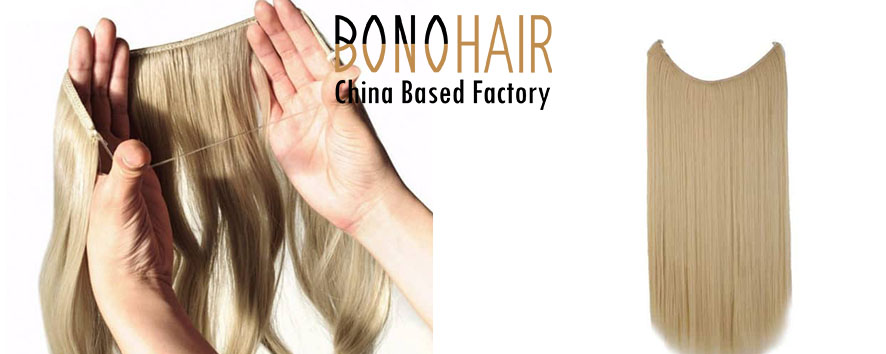
Halo hair extensions are other temporary extensions that do not damage natural hair. Instead of small clips, these hair extensions are attached with a wire at the base. Unlike small clip-in hair extension sections, a halo extension is a single long hairpiece in which hair strands are attached to the wire, and the wearer is supposed to fix this wire above the crown like a hairband.
Wearing halo hair extensions takes less than 30 seconds; therefore, it best suits those who always run out of time and want a quicker solution to add thickness and length to natural hair. Halo hair extensions feel comfortable against the scalp, and one can wear them all day long without feeling added pressure.
Halo extensions are even better than clip-in extensions in terms of hair damage. Installing and removing small metal clips every day may damage some of your natural hair; however, removing a bigger headpiece headband-like hairpiece is subjected to a more secure attachment.
Tape-in Hair Extensions
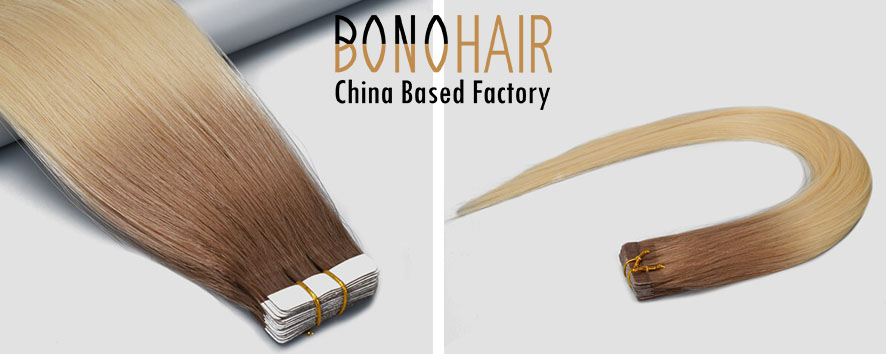
Tape-in hair extensions are categorized under semi-permanent extensions and require a hair expert to install. Hair strands are attached to an adhesive tape-like base which is supposed to be attached to your natural hair. The hair expert takes a small section of your hair and secures it between tape-in extensions by adding one extension above and another one below. You can call it a hair sandwich.
Depending upon the required hair density, it takes approximately 45 to 50 minutes to attach 25 to 30 hair extensions. Tape-in extensions are recommended to be removed every six to eight weeks to break natural hair. Tugging in extensions creates an added burden on the scalp, damaging natural hair in the long run.
Tape-in hair extensions are perfect for boosting volume. This type of extension is recommended more to those having naturally thicker hair texture so that hair strands hold the tape-in extensions in place and bear the force.
Different hairstyles like messy buns, high ponytails, and fashionable braids can be easily styled with tape-in extensions.
Bonded Hair Extensions
Bonded hair extensions are advanced permanent extensions that look more natural than tape-in or sew-in hair extensions. This type of hair extension has a protein keratin bond attached to the base. A hair expert is required to affix these bonded extensions to your hair. The expert will make a row after parting natural hair in two sections. Each extension is placed and heated along the hairline so that protein would melt, fixing the extensions to the natural hairline.
Due to smaller bonds, these extensions look very natural. With proper care and maintenance, bonded hair extensions can last up to six months. If the extensions are made with human hair, no one can differentiate between your natural hair and the extensions.
I-Tip Hair Extensions
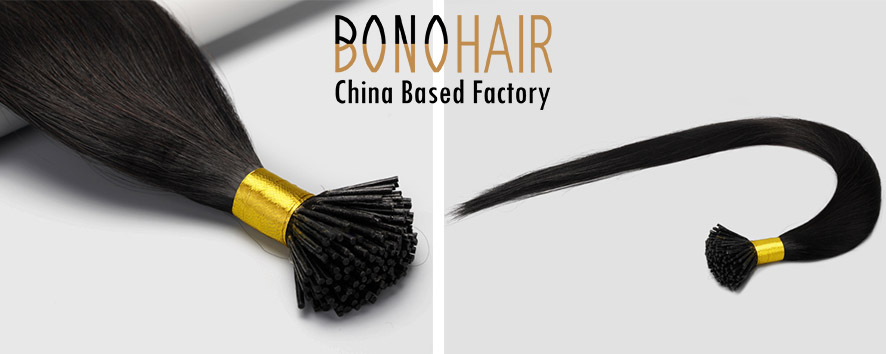
I-tip hair extensions resemble a shoelace in shape. The attaching end has a small plastic tube that needs to be fixed along the natural hairline. A hair expert will make a section by parting the hair on your head where the hair thinning is most prominent. In this section, each extension thread will be placed along the hairline, and the expert will punch it with the help of a heating gun or punching tool.
Then I tip hair extensions with silicone punches or copper tubes threaded into natural hair before providing heat to affix them. This method can prove to be a bit harsh for natural hair and scalp, making it prone to damage. It is not recommended for those struggling with medical hair loss or hair thinning due to sensitive scalp.
U Tip Hair Extension
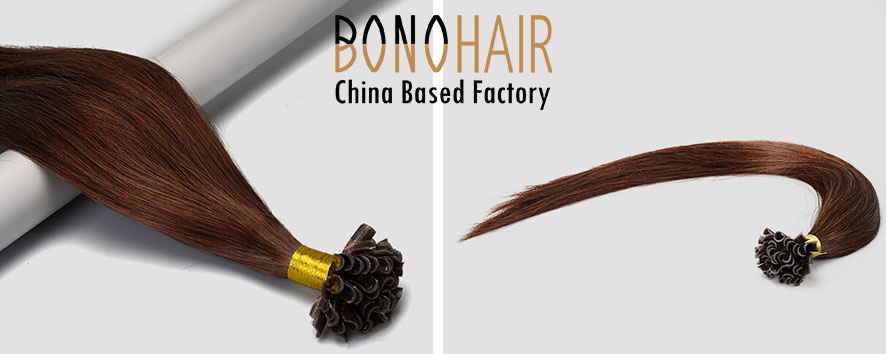
U tip hair extensions have a nail-shaped keratin base. The hair expert will place a few strands of your natural hair in the U-shaped base and provide appropriate heat, melting the keratin base. The melted keratin will bond the extensions tightly to your natural hair, making it look like a part of your scalp.
U tip hair extensions can last up to six months, provided the wearer takes proper care of them. Frequent exposure to heating tools and harsh chemicals can make the extensions look dull and frizzy.
Applying U tip hair extensions requires a clean residual-free scalp; therefore, U tip extensions are not recommended to those having color-treated hair or naturally curly hair, which are difficult to clean. In that case, I-tip hair extensions would be a better choice. Hair experts prefer I-tip hair extensions over U-tip extensions due to heat-free fusion.
Flat Tip Hair Extension
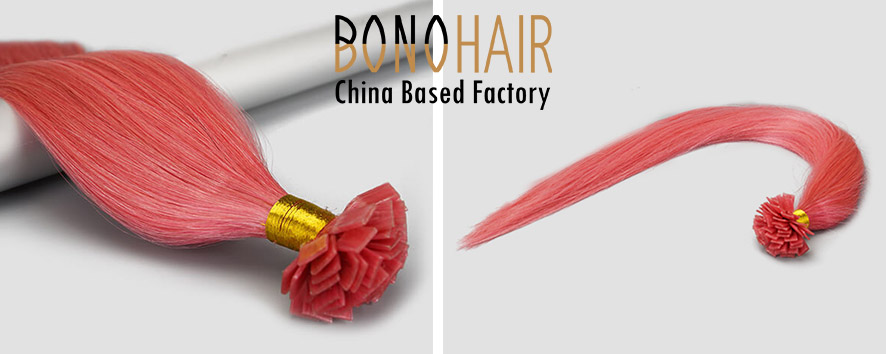
A flare bead is attached at the base of flat tip extensions. Hair experts thread natural hair into the flare bead and compress it with the help of a unique punching tool. Applying flat tip hair extensions does not involve any heat, adhesive, or glue, making it a perfect choice for women struggling with hair thinning but walking away from extensions out of the fear of damage to natural hair.
The flare bead allows 360-degree hair movement, unlike tape-in extensions in which movement is restricted. The bonds are entirely invisible, while hair can rotate easily in any direction.
V Tip Hair Extension
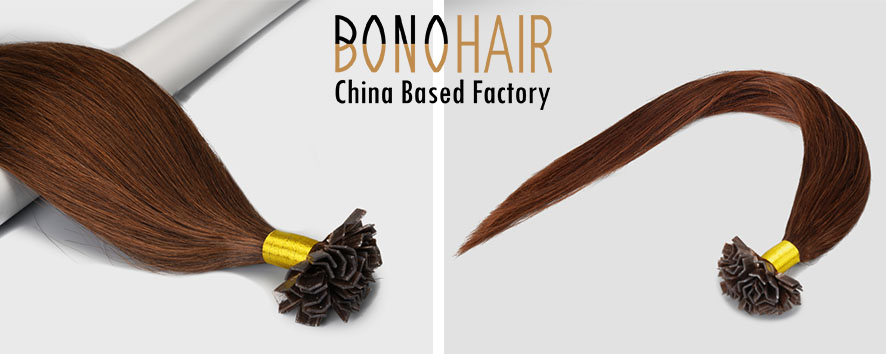
The bonds in U tip hair extensions can be detectable at times. V tip hair extensions are similar to U tip extensions in function; however, the keratin base is much flatter than the U tip to make the bond invisible. After applying the required heat, this extension utilizes a high-quality Keratin protein base that melts and affixes to natural hair.
V tip hair extensions can last up to three months. Different hairstyles can be easily pulled off with the help of these extensions. V tip bonds make a flat appearance and look extremely natural.
Sew in Hair Extensions
As the name shows, sew-in hair extensions are threaded with needles and threads into natural hair. It’s a relatively permanent extension that requires a lengthy and somewhat painful procedure of installing extensions to natural hair. Some sections of hair are weaved into braids, and extensions are sewn into those weaves for a firmer grip. The method is not recommended for those having genetically thin hair textures.
It suits those who want a permanent solution to hair thinning. However, most hair experts do not suggest it to their clients due to the damage it causes to natural hair.
Micro Ring Hair Extensions
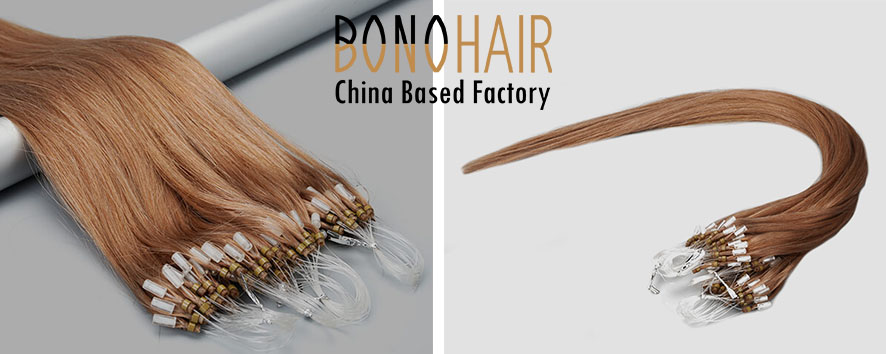
Tiny rings are attached to the extension roots, which keep the extension in place. Micro ring extensions are the most incredible semi-permanent hair extensions. These extensions can be applied at home. All you need to do is take a few hair strands and attach the micro ring to those strands, 1 cm away from the scalp. These are the most petite undetectable rings that do not require additional adhesive or heat to be tucked in.
The extensions can be easily removed and reused. However, removing extensions daily is not recommended as applying micro ring hair extensions is a time-consuming process. Additionally, installing micro rings daily can damage natural hair to some extent.
Weft Hair Extensions
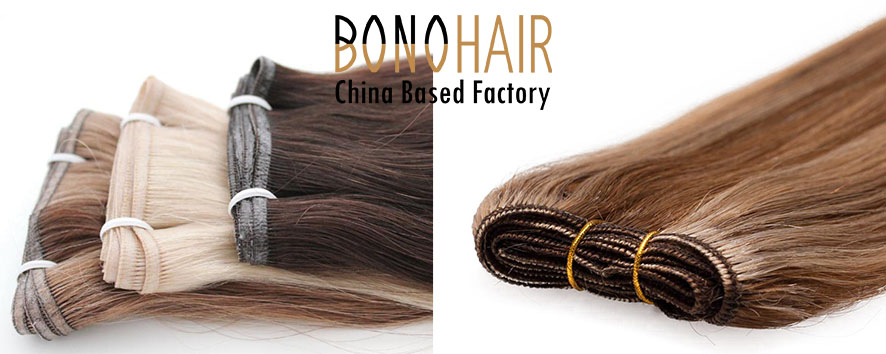
Weft hair extensions are stitched hairpieces that are applied to the hairline with the help of surgical adhesives. These extensions have a flat wefted base that needs to be glued to the scalp. It is a semi-permanent method to add volume and length to hair. Weft extensions lay flatly against the scalp; thus, one weft is recommended for medium density, while two wefts must be applied if you want thicker hair.
Strong adhesive can damage the scalp and natural hairline. The weft hair extensions do not suit those having a sensitive scalp.
Ponytail Hair Extensions
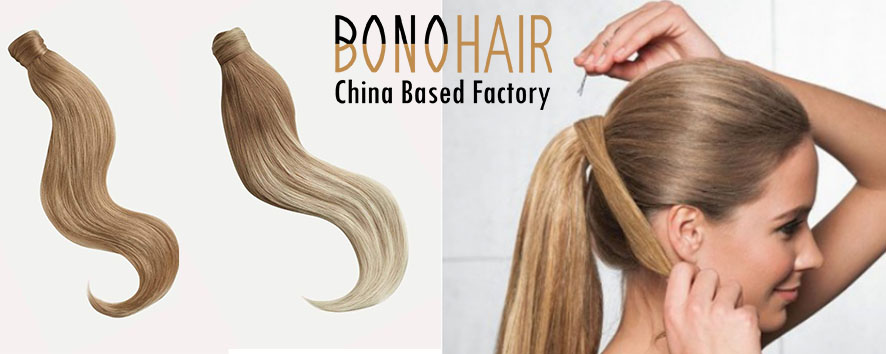
These are the wrap-around hair extensions to create sleek and long ponytails. Ponytails do not look great unless the hair has medium to thick density. Ponytail hair extensions are temporary extensions to create fuller and thicker striking ponytails. These are pre-styled extensions that are attached to a wrap-around band. A wearer has to make a pony with natural hair and wrap the extension around, and voila!
Ponytail extensions are ideal for those who love this hairstyle but lack desired hair thickness. Messy buns and braids can also be made with the help of ponytail extensions.
Hair extension Tools
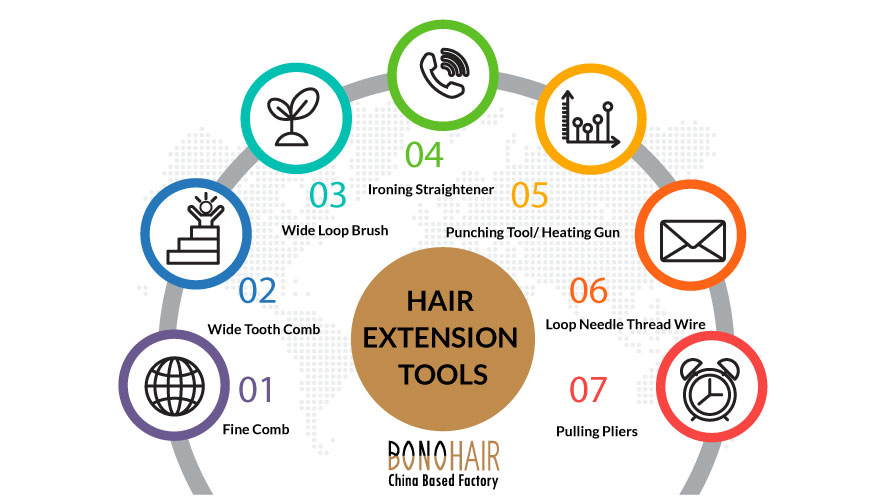
Fine Comb
To tease and section hair, a fine comb is necessary. Each type of hair extension requires the hair expert to make smaller sections in hair. The fine comb has a slim pointed base that helps make clean and crisp hair sections. Teasing hair also becomes more accessible with the help of a fine-tooth comb. If you have naturally thin hair, you may need to tease the hair a lot to create a fuller look and hide the bonds of the extensions perfectly, so having a fine-tooth comb is a must.
Wide Tooth Comb
A wide comb helps in detangling hair extensions. Beaded, bonded, weft, tape-in, or micro ring extensions have smaller knots that we call bonds. These bonds can be exposed to damage while combing hair. A wide-tooth comb helps smoothen hair without creating damage to extension knots.
A wide-tooth comb further keeps the frizz and split ends at a bay. It creates less friction against hair, making it look naturally healthy and shiny. A Wide-tooth comb is recommended to detangle hair every day, even when not wearing extensions. Less hair breakage occurs when a side tooth comb is used.
Wide Loop Brush
Some people are more comfortable using a hairbrush to detangle instead of a comb. A wide loop brush is more suitable than a bristle brush if hair extensions are attached. A bristle brush may get stuck in hair extension bonds, causing damage. Wide loop brushes have large rounded loops that do not interfere with extension knots. Instead, it detangles hair smoothly. Most wide loop brushes are made with soft nylon to glide through hair effortlessly. Apart from hair extensions, a broad loop brush is better for natural hair. It does not cause breakage.
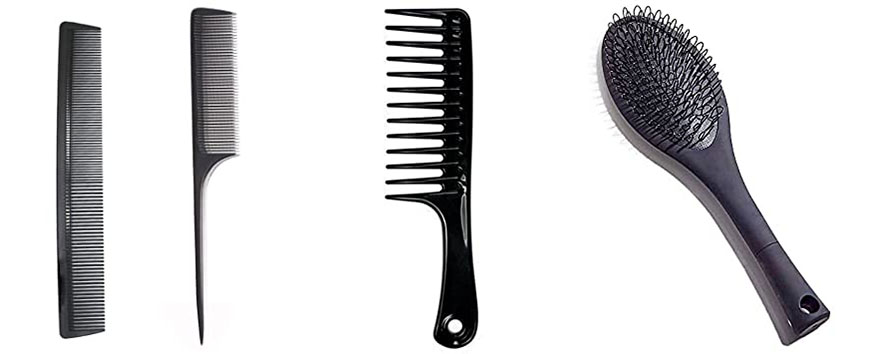
Ironing Straightener
Hair extensions are often required to be straightened out with the help of the heating tool. A flattening iron is mandatory in order to keep the extensions in shape. To keep the extensions in shape, use a hair straightener at least every two weeks to keep up the shape.
Punching Tool/ Heating Gun
Micro rings, beads, U tips, I tips, V tips all these extensions require punching tools or a heating gun to fix the extensions in the hair. Most people do not apply for hair extensions at home, so there is no need to buy additional tools. If you plan on installing and removing extensions daily, these tools must be handy for quick service.
Loop Needle Thread Wire
These wires are required to keep the bonds of extensions in place while moving and styling the hair. Micro ring extensions are freestyle and move 360 degrees; however, tape-in or other extensions have restricted movements. Securing the bond with needle wire helps in elongating the lifespan of hair extensions.
Pulling Pliers
Pulling pliers are required to remove the extensions without damaging natural hair. Pulling pliers reopen the tight micro ring locks and extension bonds without letting the natural hair tug in during the process. These tools offer a smooth hair extension wearing journey. Additionally, it is always wise to be equipped with all the necessary weapons before entering the zone.
Different Material of Hair Extensions
Be it a wig, toupee, or extensions; almost all alternative hair replacement systems have two distinctive hair strands. Synthetic hair and human hair. Synthetic hair differs in texture from human hair.
Let’s delve into the details of each type so you may choose one as per your budget and preference.
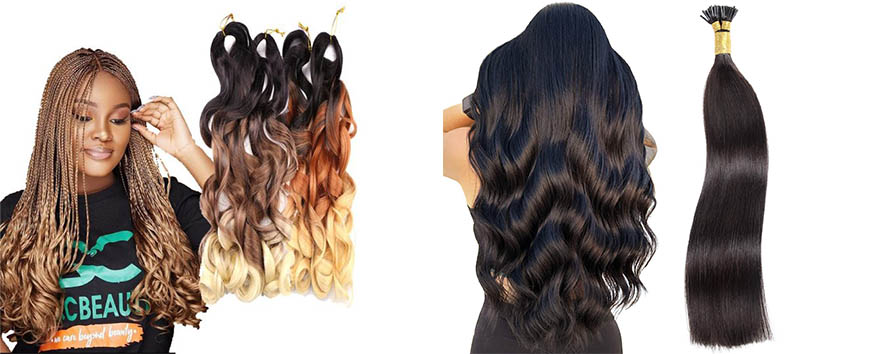
⮚ Synthetic Hair Extensions
Low-grade acrylic is chemically treated and processed to make individual hair strands. Synthetic hair strands look closer to the natural, and one cannot tell the difference between synthetic hair and human hair at a glance. The texture of synthetic hair, however, differs slightly from that of natural hair. It looks shinier and thicker.
Pros
- Synthetic hair extensions are pre-styled. Synthetic fiber does not lose its style in one wash, unlike human hair that needs to be restyled after every wash.
- Synthetic hair extensions are more cost-effective. Since human hair fiber is more expensive, synthetic hair is a relatively budget-friendly option.
- Heat-friendly synthetic fiber can easily be styled with the help of heating tools. Most synthetic hair extensions are made with heat-friendly fiber, so you may curl or flatten them according to your preferred hairstyle.
Cons
- Synthetic fiber cannot be dyed. Whichever color you choose for your extensions is permanent, and you cannot color treat your synthetic hair extensions.
- It looks less natural than human hair fiber.
- Synthetic hair extensions have a relatively shorter life span. Good quality extensions can last up to six months with proper care.
⮚ Human Hair Extensions
Most human hair extensions are made with Chinese virgin human hair or Remy human hair. Some brands utilize Mongolian and Indian hair fiber to make hair extensions. These extensions look exactly like human hair, making it impossible for other people to point out if you are wearing extensions.
Pros
- Human hair extensions perfectly blend in with natural hair and give a smooth finish. If you closely match your hair color with that of extensions, the extension will allow you to show off a naturally fuller head.
- In case you want to go balayage or change your hair color while wearing extensions, no worries. Human hair extensions can easily be dyed or treated like natural hair.
- The average lifespan of a good quality human hair extension lies somewhere between nine to twelve months under proper care.
- Looks more natural
Cons
- With the goodness of human hair, these extensions can easily cost you a fortune. Human hair extensions are a lot more expensive than synthetic versions.
- Human hair extensions become frizzy if not treated well. The extension hair is unable to produce or absorb natural oils and moisture; therefore, exposing it to harsh weather or heating tools excessively can permanently damage hair extensions.
- Some users complain of human hair extensions being heavier than synthetic hair extensions.
- Human hair extensions lose their style after one wash, so frequent styling is required to maintain the hairstyle.
Care Instruction for Hair Extensions
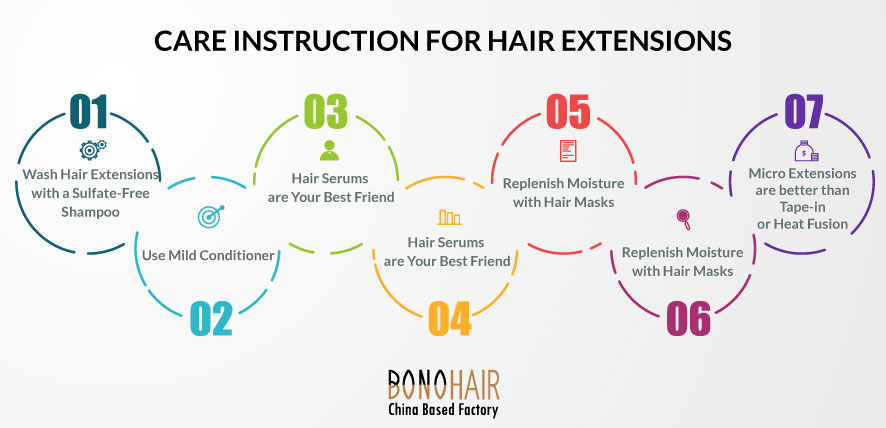
Wash Hair Extensions with a Sulfate-Free Shampoo
Attaching permanent hair extensions block oxygen from reaching the scalp. Oxygen is mandatory for hair follicles to stimulate hair regrowth. Blockage can cause the natural hair to fall off. If you are wearing extensions, cleaning extensions and scalp properly is essential.
Using sulfate-free mild formulas to shampoo hair and scalp is a healthier alternative. Sulfate-free shampoo cleans the residue without drying out the scalp. Gentle formulas are also easy on extension bonds.
Use Mild Conditioner
Hair extensions though become a permanent part of your scalp; these hair strands are unable to take nourishment from the scalp or produce their natural oils, unlike natural hair, which absorb nutrients from the hair follicles. You may use a mild conditioner after every wash to keep the hair extensions smooth and frizz-free.
Human hair extensions can absorb moisture from conditioners to some extent. Using a conditioner can increase the hair elasticity of human hair.
Hair Serums are Your Best Friend
If you apply and remove the hair extensions daily, your scalp is exposed to hair adhesives, tapes, hot guns, glue, and added force. This may damage your scalp and hair follicles and trigger hair loss.
Always try to replenish moisture content by applying hair serums after removing the extensions or even while wearing them. Mix essential oils in a carrier oil of your choice and apply the serum religiously. Store-bought hair serums work as perfect as homemade hair serums.
Replenish Moisture with Hair Masks
Hair masks and leave-in conditioners replenish the lost moisture. Give your scalp and extensions a dose of moisture and nourishment through hair masks. Avoid using harsh formulas as they can make your hair extensions feel heavier. Organic hair masks like egg yolk mixed with olive oil or plain yogurt with two drops of tea tree oil make the best cleaning and moisturizing hair masks.
Trim Your Extensions
Do not leave your hair extensions untouched just because they are not naturally grown. Hair extensions are attached mostly 1 cm away from the scalp. If the extensions are permanently attached, the length will change once the natural hair grows some inches. Trim your hair extensions along with natural hair to create a healthier and fuller look. Trimming promotes hair growth and helps sort out split ends.
Micro Extensions are better than Tape-in or Heat Fusion
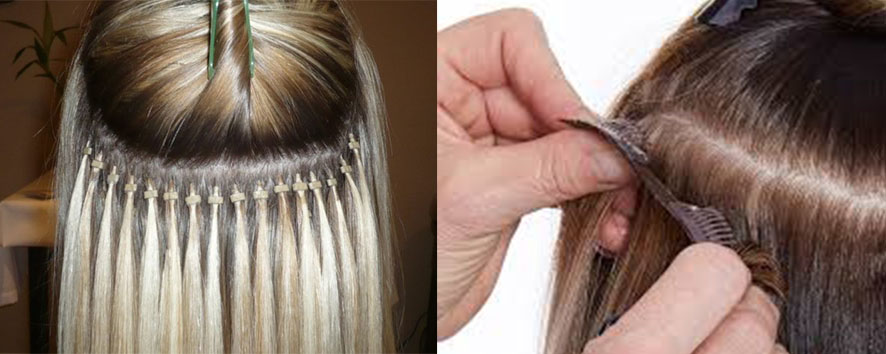
If you have a sensitive scalp, infection on the scalp, or medical hair loss, you better use micro extensions; however, the micro metal ring is not suitable for those going through radiation or chemotherapy, so in case of hair thinning due to cancer, use clip-in hair extensions. Avoid adhesives to keep your scalp healthy.
Always Buy Good Quality Hair Pieces
No matter how much care and effort you put in maintaining hair extensions, if the quality of your hairpiece is not good, all your efforts will be in vain. Always buy from authentic suppliers like Bono Hair.
If you are a salon owner or a distributor, you must supply your customers with genuine quality hairpieces. To get high-quality hairpieces at discounted rates, always connect with Bono Hair.
How do Hair Extensions Work?
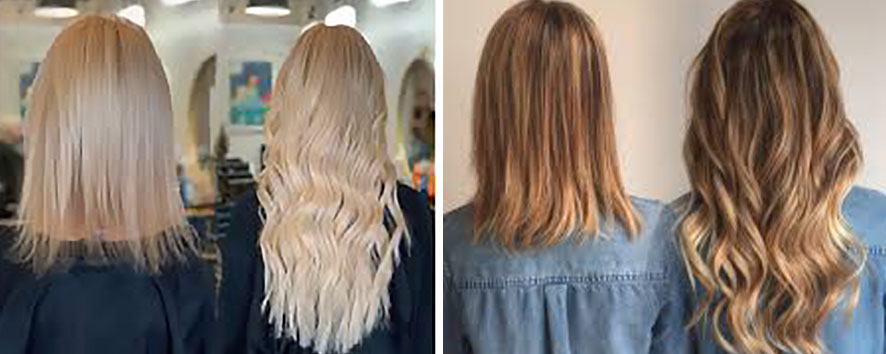
Hair extensions are widely gaining popularity. Every year the sales increase up to million dollars across the US only. These extensions can be used for aesthetic purposes as well. You do not have to have a hair thinning problem in order to enjoy the hair extensions. Many women use extensions to increase hair volume. Ponytail extensions are a staple in the hair wardrobe of those who love creating long and beautiful ponytails or hair weaves.
To make the hair extension work best in your favor, you may take care of certain elements. The most crucial is hair texture. Numerous hair textures exist in the world. Wavy, kinky curly, loose curls, silky straight, all kinds of hair textures are equally beautiful. It is important to match your natural hair texture with that of hair extensions; otherwise, your extensions would either look fake, or you will have to curl or iron them repeatedly.
Another important element is hair color. If you want to create fullness and hide hair thinning, look for a hair color that closely resembles your original hair. In case you are looking to create texture in the hair, you may opt for one or two shade lighter hair extensions than your natural hair color to create stunning streaks and highlights.
Consult a hair expert before choosing the hair extension color, size, and texture. Experts can guide you better and suggest hairpieces according to face shape and overall personality.
How to Hide Extensions in Very Short Hair?
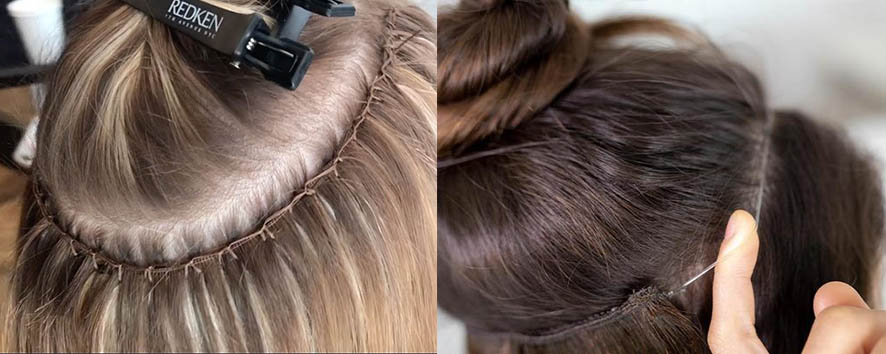
Hiding extensions in short hair is not a problem at all. Adjust the size of extensions according to your natural hair, and you are good to go.
Hiding extensions in thin hair can be a huge concern. Hair extensions have bonds that you need to hide with a section of your hair in order to make it look natural. If your hair has a naturally thin texture, you can tease the upper section a bit to create more volume and hide your hair extensions perfectly.
If your hair thinning is at a later stage where hiding hair extension bonds is not possible with hair teasing and sectioning, you may use weft hair extensions. Weft hair extensions do not have knots; instead, you need to glue the stitched part along with the natural hairline. The stitching is fine and is undetectable for the naked eye, making your extensions look natural.
If you want a temporary solution, wear halo extensions. Halo extensions are attached with a thin wire that you can adjust above the crown like a headband. This wire is almost invisible so you do not have to worry about your hair extensions looking unnatural.
How to put in Hair Extensions?
Installing hair extensions depends upon the type of extension you have chosen for yourself. Permanent and semi-permanent hair extensions like U tip, V tip, or micro extensions require expert assistance. You need to go to a nearby salon to get your hair extensions affixed. These types of extensions require extensive effort, skills, and tools that you may not have.
If you are wearing temporary hair extensions like halo extensions or clip-in extensions, you do not need to go anywhere, and you can install them easily at home. All you need to have is a fine sectioning comb to create neat hair sections and a hair clip to secure the sectioned hair.
Part your hair into two sections and secure the above section with the hair clip. Now clip the extensions along the hairline in a row. Tease the above section gently and cover the extension clips with the help of your natural hair. This is the easiest method to wear hair extensions. Set your hair with a spray before going out to keep the hair in place.
How Long Do Hair Extensions last?
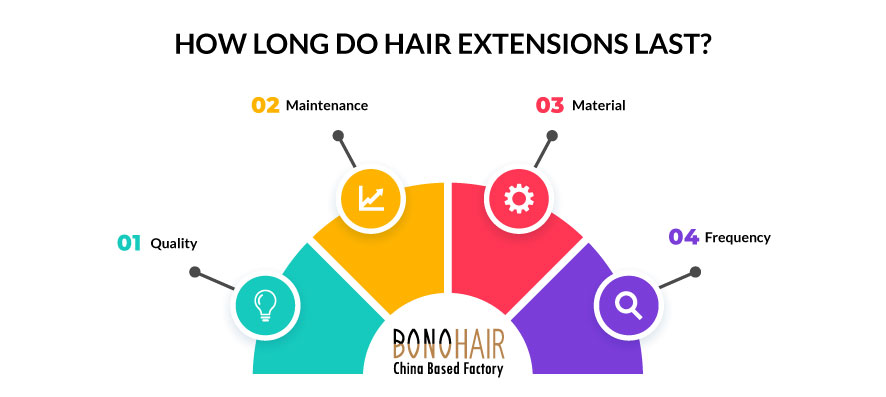
The life span of hair extensions depends on many contributing factors. A few of those factors are discussed here;
- Quality- cheap quality hair extensions do not last long. Invest in good-quality hair extensions to make your investment worth it. Collect reviews of the sellers and manufacturers before purchasing hair extensions.
- Maintenance- if hair extensions are taken good care of, they last longer than usual. Properly clean extensions with the help of mild shampoo and conditioner. Always spray heat protectant before exposing the extensions to heating tools.
- Material- synthetic hair extensions last up to six months, while human hair extensions can last up to a year. Good quality human hair extensions can last even more than a year.
- Frequency- how often you use your extensions also contributes to its life span. Extensions that are worn daily may not last longer than those you wear occasionally. If you wear temporary extensions, remove them before bedtime to increase their lifespan.
How Much Do Hair Extensions Cost?
The cost of hair extensions varies according to the material, length, and density of hair extensions. Human hair extensions are more expensive than synthetic hair extensions. Permanent hair extensions also cost more than temporary hair extensions.
The average cost of hair extensions, however, lies between 200$ to 500$. Luxury human hair pieces can cost up to 700$. Permanent hair extensions include the cost of installation as well. The hair expert charges up to 50$ for applying hair extensions.
If you need medium hair density, the cost of extensions will reduce to half as compared to fuller hair. The more extensions you want, the higher the price will be.
How to Properly Wash Removable Hair Extensions
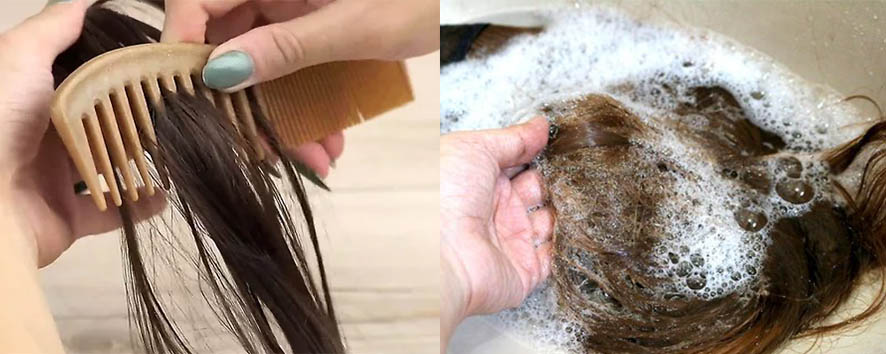
Cleaning hair extensions properly involves the following steps;
- Detangle your hair extensions with the help of a fine comb.
- Soak the extensions under lukewarm running water or in a basin, tub, or sink full of water and mix mild cleaning shampoo.
- Gently massage shampoo into each weft of hair from top to bottom. Never use the comb on wet hair extensions instead, use your fingers to detangle.
- Rinse out the shampoo by placing your hair extensions under running water. Make sure the shampoo is properly cleansed.
- Take a mild conditioner and apply it to hair strands with the help of your fingers. Remember, being gentle is the key. Leave the conditioner for several minutes and allow the extensions to replenish moisture.
- Rinse your hair extensions again under cold running water, removing all residue. The conditioner must be properly rinsed out. Otherwise, it will weigh down the extensions.
- Squeeze the excess water out of each hair strand with your hands.
- Never use a towel to dry out hair extensions.
- Use a wide-tooth comb after hair extensions are half dry.
- Layout each weft flat on a towel and allow them to air dry in a place away from sunlight.
- If you are in a hurry, wrap the hair extensions in a cap and use a blow dryer on low settings to dry the hair strands completely.
Frequently Asked Questions about Hair Extensions
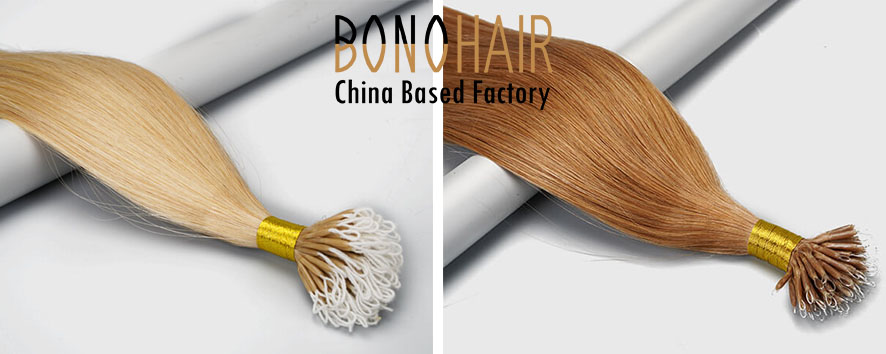
1. What are the dos and don’ts of hair extensions?
For hair extensions, excess of everything is bad. Do not over wash, over iron, or over-style your hair extensions, and you are good to go. Oiling hair extensions shall also not be done. Use the right kind of products to take care of hair extensions, and your extensions will last longer than the given life span.
2. How long does it take for hair extensions to settle?
Getting used to permanent hair extensions takes up to a week. Most people get used to weighing down heavy feelings in less than four days; however, the installation and weight of permanent hair extensions require at least a week to settle down. Temporary hair extensions can be worn and adjusted according to the need.
3. What should you not put in hair extensions?
There are a few products that are enemies for your hair extensions. The most alarming product out of all shampoos contains sulfate. Sulfate is a good cleaning agent for natural hair, but it can loosen the bonds of hair extensions. Other than sulfate bleach, harsh chemicals, dye, and products containing alcohol must also be avoided.
Bristle brush must also be avoided. Use a wide-tooth comb or Loop brush to detangle your hair extensions. Wide-tooth comb and brush do not displace the extension bonds, unlike fine comb, which can be stuck and stretch extensions causing the hair to fall off.
4. How long do hair extensions last in your hair?
Hair extensions can last up to six months. However, it is advised to remove extensions every six to eight weeks to give your scalp a break and allow the natural hair to breathe. Permanent extensions can block oxygen supply to the scalp and hair follicles, hindering the natural hair regrowth cycle. If you do not want the hair extensions to damage your hair, you shall remove hair extensions now and then.
Temporary hair extensions must be removed every day before going to bed. Remove the extensions and apply hair serum to replenish the hair moisture and re-energize the scalp.
5. Can I sleep on my hair extensions?
The worst thing you can do to your hair extension is sleep in it. Temporary hair extensions are not designed to take the friction; therefore, removing them before bedtime is mandatory. Sleeping with clip-in or halo hair extensions can damage the metal clips or wire. Hair strands also become frizzy due to friction. Permanent hair extensions cannot be removed before bedtime; therefore, it is recommended to tie your hair up in a bun so that you don’t sleep on hair extensions. Sleeping in hair extensions will damage both the natural hair and the extension hair due to friction and force.
6. Can I sleep with wet hair extensions?
Wet hair extensions are very fragile and prone to breakage. Sleeping with wet hair damages hair excessively – be it natural or hair extension. Hair follicles lose their grip on wet hair. Thus, if you sleep on wet hair, your hair will break more often. Similarly, when hair extensions are wet, the bonds at the roots are slightly loose, making the hair strands more vulnerable to breakage and damage. Sleeping on wet hair extensions is not recommended at all. Always air dry your extensions before bedtime; if you have less time, you can blow dry your hair extensions on low heat settings.
7. Human v/s synthetic, which extension is better?
Both types of hair extensions serve the same purpose. People choose hair extensions according to their preferences and budget. If you prioritize cost over durability, you shall choose a synthetic version of hair extensions; however, if the price tag is not an issue for you and you want an extremely natural-looking hair extension, invest in human hair extensions.
You can dye human hair extensions later on, unlike synthetic ones which can never be dyed or color-treated. Synthetic extensions can hold a style better than human versions, so opt wisely. You may consult your hairstylist before investing in any type of hair extension.
8. How often should I wash my hair extensions?
In case of temporary hair extensions, you shall wash your extensions after 20 to 22 minutes. If you use a lot of hair spray and setting gels, your extensions might develop a cast of gel and residue. You need to carefully wash your extensions if residue buildup is there otherwise, avoid over washing hair extensions.
Permanent hair extensions undergo washing at least twice a week. Use gentle formulas to maintain the texture and quality of your hair extensions and avoid over washing. Frequent washing can make your extensions look dull and damaged. It also makes the hair strands prone to breakage and hair fall.
9. How to store hair extensions?
Either store our hair extensions in a box or hang them on a hanger. If you are not a frequent extension user, make sure to store your extensions in the storage box carefully after detangling each strand. This way, you will find brand new extensions every time you are going to open up the box.
If you use hair extensions daily, you shall keep a separate hanger in your cupboard or dressing area. Place the extension on the hanger and carefully detangle the strands so you may find untangled hair the next morning.
Conclusion
Hair grooming is an essential part of overall dress-up and styling. Women experiment with their hair in order to find the signature hairstyle that may make them look effortlessly modern and up-to-date. Trying new hairstyles requires healthy hair. Creating hairstyles with thinning hair is quite difficult.
Hair extensions provide a savvy solution to those struggling with hair thinning or fine hair texture. These extensions give additional volume and length, making it relatively easier to pull off several hairstyles. Those suffering from medical hair thinning or hair loss at the beginning stages can also use hair extensions without hesitation.
Finding a good quality hair extension is necessary to make the investment worth it. Hair extensions are available in various sizes, colors, and materials. Select the one that perfectly goes with your style, hair texture, budget, and frequency of usage.
Applying hair extensions call for an expert unless you are using clip-in extensions that are easy to install. Once the extensions are applied, post-application care is mandatory to expand the lifespan of your hairpiece.
For the best quality hairpieces, always buy from authentic suppliers. If you are a salon owner, distributor, or business owner dealing in hairpieces, never disappoint your customers by providing cheap quality hairpieces, instead buy premium quality hairpieces at wholesale rate from Bono Hair.
Bono Hair crafts gold-standard wigs, toupees, and hairpieces for men and women to help customers deal with medical hair loss or balding. Our hairpieces last more than a decade due to high-quality material and supreme stitching. We design customized hairpieces according to your customer’s demand and supply them at a wholesale rate to ensure maximum benefit to business owners and distributors.
Contact Bono Hair Now to get a hair replacement system at an exclusive WHOLESALE rate.











